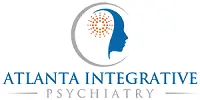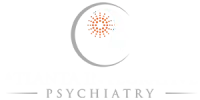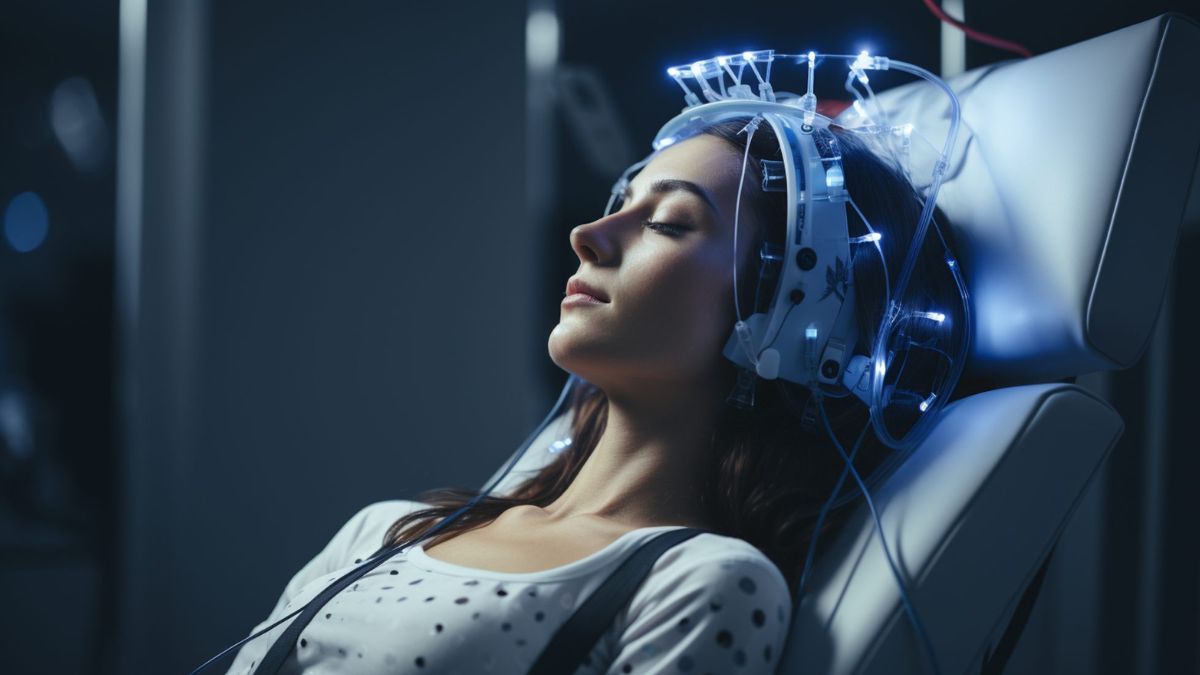
When you understand the similarities and differences between TMS vs. ECT, you will be best prepared to work with your treatment provider to determine if you can benefit from either service.
If you or a loved one are struggling with mental health, don’t wait! Call us today or schedule a free assessment to take the first step towards healing!
What Are TMS and ECT?
Before we compare TMS and ECT, it can be helpful to review a few fundamental facts about each treatment technique first.
Transcranial Magnetic Stimulation
Transcranial magnetic stimulation, or TMS, is a noninvasive procedure that uses brief electromagnetic pulses to stimulate certain areas of the brain.
TMS is a relatively new technique:
- The U.S. Food and Drug Administration (FDA) approved the first TMS device in 2008.
- This initial approval was to help patients who had treatment-resistant depression (TRD).
- In the years since, the FDA has expanded its approval, with healthcare providers now authorized to use TMS devices to treat concerns such obsessive-compulsive disorder (OCD) and pain from migraines.
During a TMS sessions, the patient is usually seated in a comfortable chair with a small coil placed against their forehead. This coil is often incorporated into a helmet or similar device. The coil is connected to a piece of equipment that generates the electromagnetic pulses.
These pulses penetrate the patient’s skull and reach a few centimeters into their brain, where they stimulate neural activity.
Experts are not entirely sure how TMS works, but they believe that this stimulation can prompt the brain to release additional amounts of various mood-related neurotransmitters, including serotonin, dopamine, and norepinephrine.
While the TMS device is activated, the patient will hear a clicking sound and may feel a slight tapping near where the coil touches their scalp. They remain awake and alert throughout the process, which requires neither anesthesia nor sedation.
Electroconvulsive Therapy
Electroconvulsive therapy, or ECT, is a controversial and often misunderstood treatment technique that was first used in the late 1930s. It is sometimes referred to as electroshock therapy or simply shock therapy.
ECT was first used to treat a patient who had psychotic symptoms. Throughout the 1940s and 1950s, its use expanded in both frequency and scope. In addition to psychosis and schizophrenia, it was also used to treat patients with depression, bipolar disorder, and suicidal ideation.
Unfortunately, as described by medical historian Johnathan Sadowsky, considerable evidence documents the misuse of ECT by some healthcare personnel during that period. In some cases, staff at inpatient facilities used ECT as a threat to keep unruly patients in line. In other cases, some physicians use ECT in an attempt to change the sexual orientation of gay patients.
The misuse of ECT was a key plot point in the film One Flew Over the Cuckoo’s nest. Which earned nine Oscars at the 1976 Academy Awards ceremony. The film’s popularity and the horrific way some used electroconvulsive therapy have left a lasting negative impact on public perception of ECT.
Many people mistakenly believe that ECT is an ineffective technique that is no longer used. This is not accurate. Mental Health America (MHA) reports that an estimated 100,000 patients take part in ECT sessions every year, usually for severe depression, anxiety, psychosis, and suicidal ideation.
Modern ECT providers focus much more on patient safety and comfort than was common in decades past. Trained professionals typically administer muscle relaxants and general anesthesia to patients before ECT sessions and monitor their vital signs throughout the process.
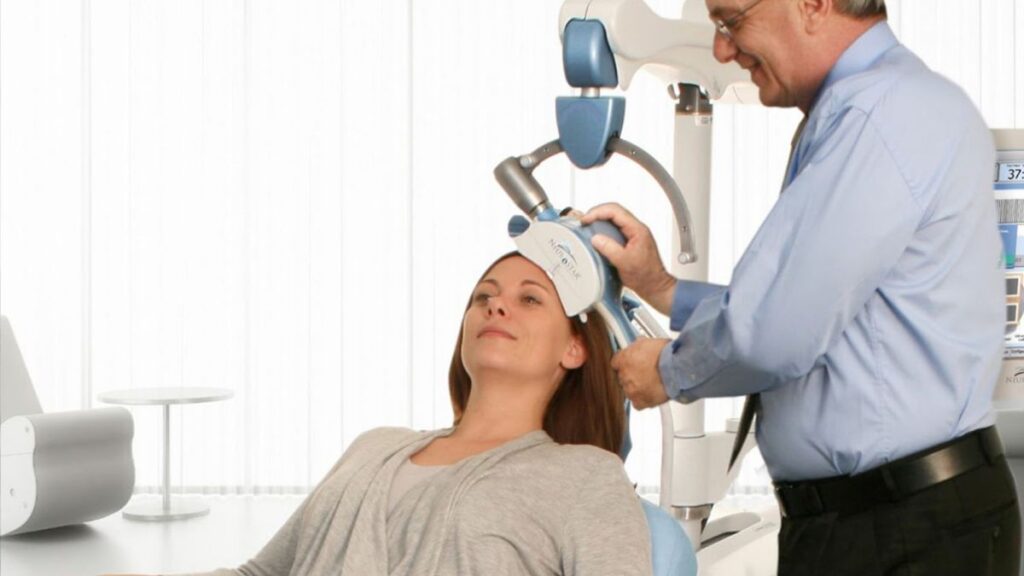
Comparing TMS vs. ECT
Having reviewed each of these services, we’re now ready to look at some of the main similarities and key differences between TMS vs. ECT.
Similarities
Shared characteristics between TMS vs. ECT include:
- Evidence-based practices like TMS and ECT have documented histories of effectiveness when used appropriately.
- When provided by experienced professionals, TMS and ECT are both safe procedures.
- Patients usually need to take part in several TMS or ECT sessions to achieve maximum benefit.
- Clinicians may use both TMS and ECT to treat patients with depression, anxiety, bipolar disorder, and suicidal ideation.
Differences
Key differences between TMS vs. ECT include:
- ECT sessions usually involve general anesthesia and muscle relaxants. TMS therapy does not require anesthesia or any other medications.
- ECT uses electrical currents to induce a seizure, while TMS employs magnetic pulses to stimulate the brain.
- ECT typically causes temporary memory loss, while TMS does not.
- Usually, TMS patients can drive, return to work, and otherwise perform everyday tasks once they’ve completed a brief post-session observation period. Doctors commonly prohibit ECT patients from driving until about two weeks after their final session.
- Healthcare professionals have been using ECT for more than eight decades. Widespread use of TMS therapy began about 15 years ago.
- Unflattering media portrayals and reports of professional misuse have contributed to public mistrust about ECT. These types of concerns have not influenced public opinion about TMS therapy.
TMS vs. ECT: Which One Is Right for You?
Comparing TMS vs. ECT can help you develop a better understanding of the benefits and potential drawbacks of each technique. But to determine if either of these services can help you, you need to consult with a qualified professional.
Effective mental health treatment can look very different from one person to the next. Even if the individuals are of similar ages and have been living with similar conditions. Just because a certain service, type of therapy, or course of treatment helps one person. That is no guarantee that it will help the other.
This is why finding a treatment provider who takes the time to review your treatment history is crucial. They should assess the full scope of your needs and discuss how the symptoms you have been experiencing have affected you. At Atlanta Integrative Psychiatry, our team is dedicated to providing personalized care by thoroughly evaluating your history and needs to create a tailored treatment plan that addresses your specific challenges.
Once you have completed a thorough evaluation, a quality treatment provider can then identify the therapies and services that are right for you.
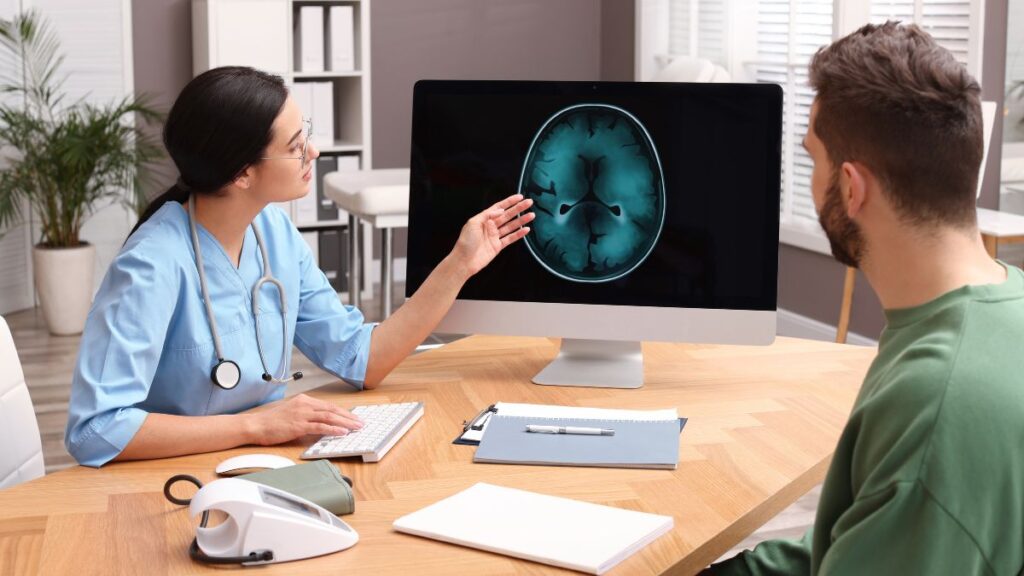
Learn More About TMS Treatment in Atlanta
Atlanta Integrative Psychiatry offers a dynamic array of customized outpatient services. These include TMS therapy designed to help adults dealing with anxiety, depression, bipolar disorder, and other complex mental health concerns.
To learn more about TMS at our center in Atlanta, Georgia, schedule a free mental health assessment or call us today! Our dedication team is happy to walk you through the process every step of the way!
